
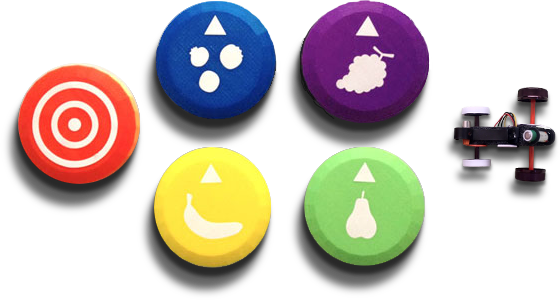

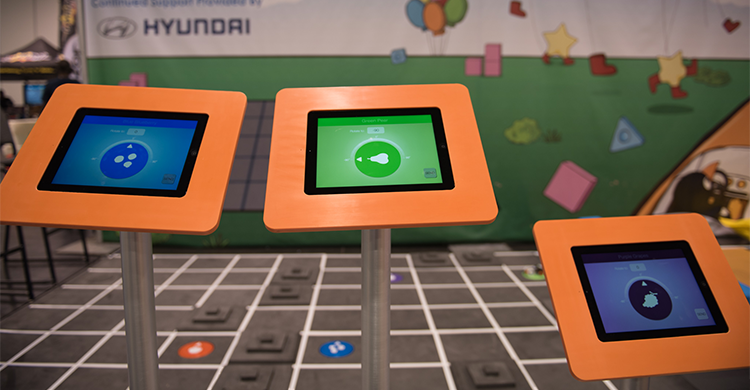
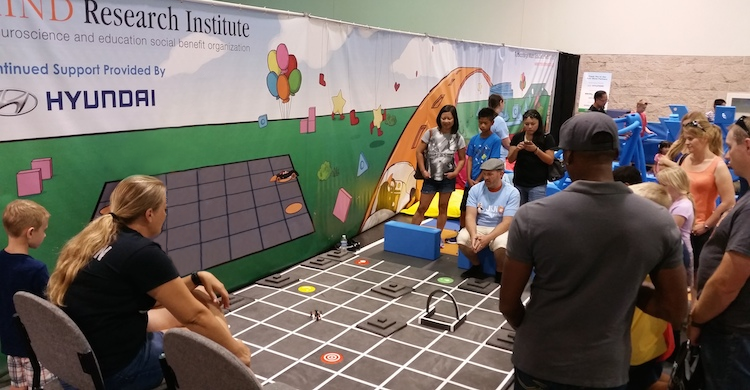
Working on a very tight timeline, we jumped immediately into sketching out what the experience would be like. We also started production on the things we KNEW we needed, like the car and mechanical rotating platforms.
Brainstorming produced this flow: people would use their devices to access a URL and control our manipulable car, rotators, and doors via wifi.
Participant Journey Map helped us better understand the complexity of the interaction system we were designing.
Further sketches explored different approaches to the Goal and Locked Gates.
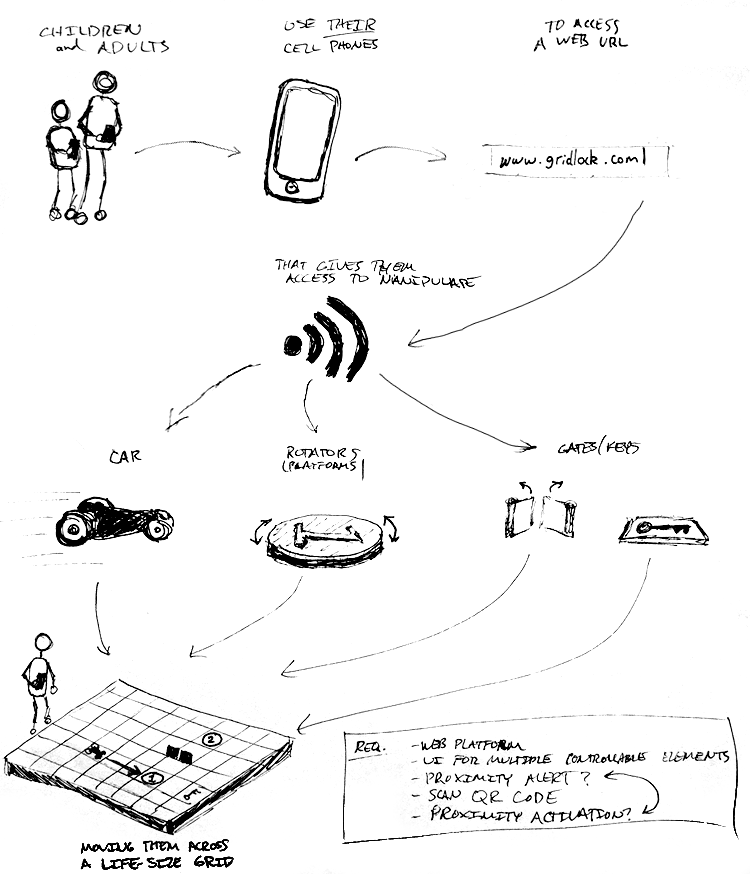
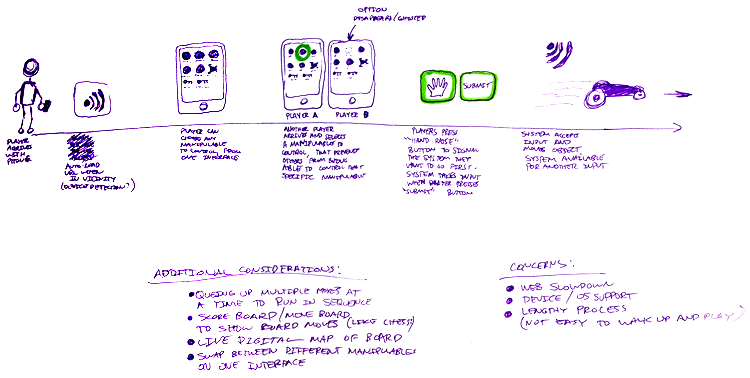
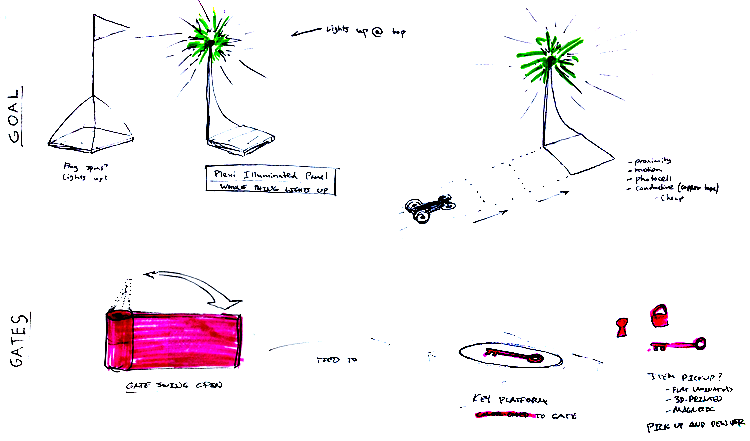
We worked fast to prototype the gameplay. I gathered a group of coworkers to test the puzzles in paper/marker form, and on the physical board with cardboard stand-ins.
Puzzles were sketched and playtested on paper to determine the best way to build single and multi-player games.
This Rapid Prototype proved to be the most helpful way for people to test the puzzles, prior to us cutting holes in the foam game mat.
A live Rapid Prototype was put together when the foam mat was finished. We explored the idea of having a magnetized car collect magnetized objects.
I embedded the rotators in foam cutouts, level with the grid surface. Holes were cut based on paper prototypes of the puzzles. The goal and barrier pyramids were made from leftover foam.
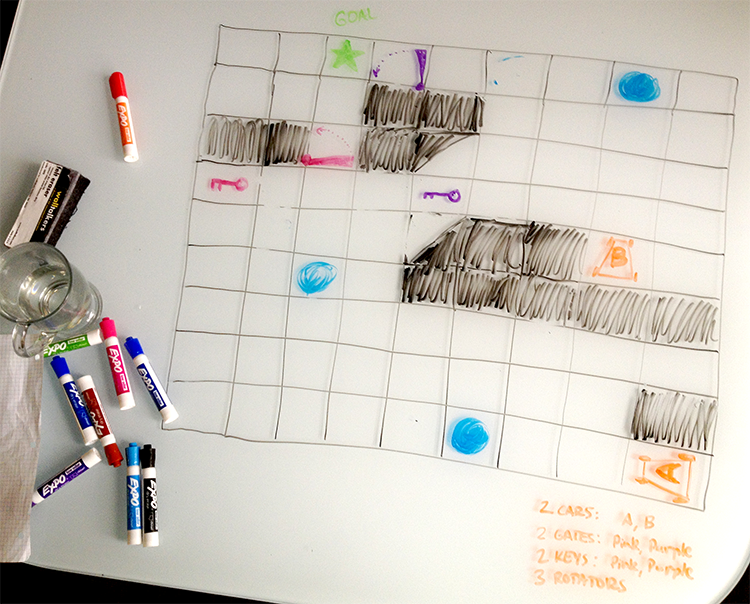


Another key part of the game was the main interaction touchpoint itself, the controller. The initial concept centered around people using their own devices over wifi, but that was all simplified to focus on specific devices for each manipulable.
Usability Tests were conducted on a basic UI to refine what was feasible.
Fixed kiosks (one for each rotator and car) simplified the design. We shelved the idea of personal smartphone use.
We began building/3-D printing and programming what we absolutely KNEW we needed: the Car, Rotators, and Back-end Platform for basic functionality.
The rotators could be controlled via a device through wifi.
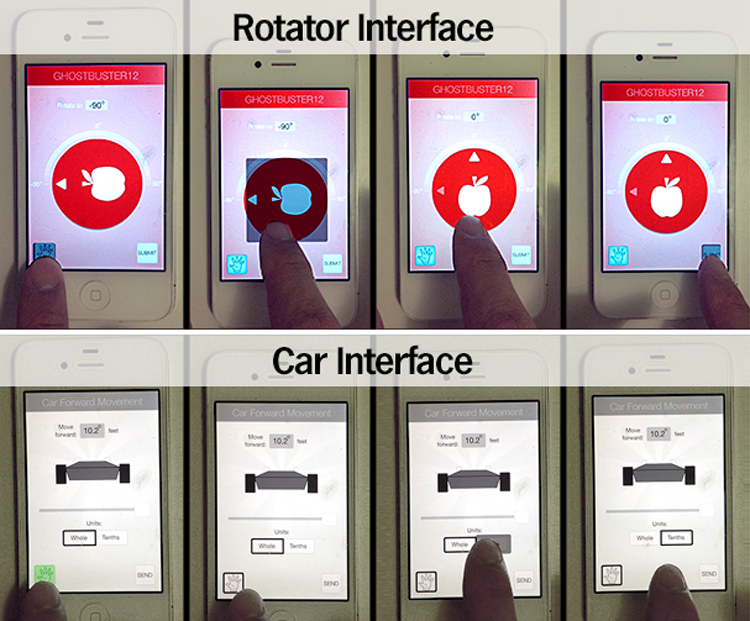

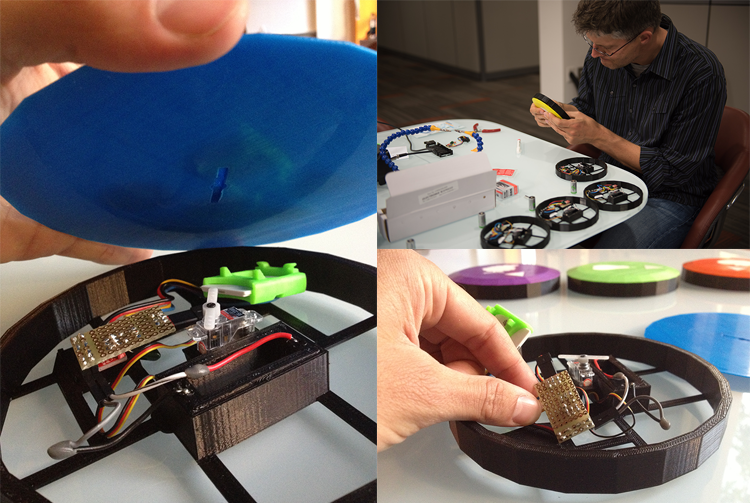
With everything simplified, we brought the game to the Orange County Auto Show. Over the course of two days, people played the game and we used each time as a usability test and made changes.
Observational Studies and Interviews were conducted on Day One to gather feedback on the puzzle layouts and interface design. Both went through some minor iterations for improvement.
Usability Testing of the interface on-site resulted in minor modifications to the sensitivity and snapping values of angle and distance increments.
Usability Testing of puzzles led to a refined learning path that gradually increased in difficulty yet properly set up players to learn the game mechanics in an intuitive way. The puzzles supported single and multi player formats.
The Gridlock exhibit was a success, with a lot of foot traffic and people playing. The challenges we dealt with were mechanical difficulties with the rotators as they were very delicate. Overall, kids and parents were engaged wtih kids spending a lot of time at the kiosks, thinking deeply about how to solve the puzzles.
Interface design
for mobile and tablet
Learn math concepts
while solving puzzles
Interactive participation
with in-person puzzle grid